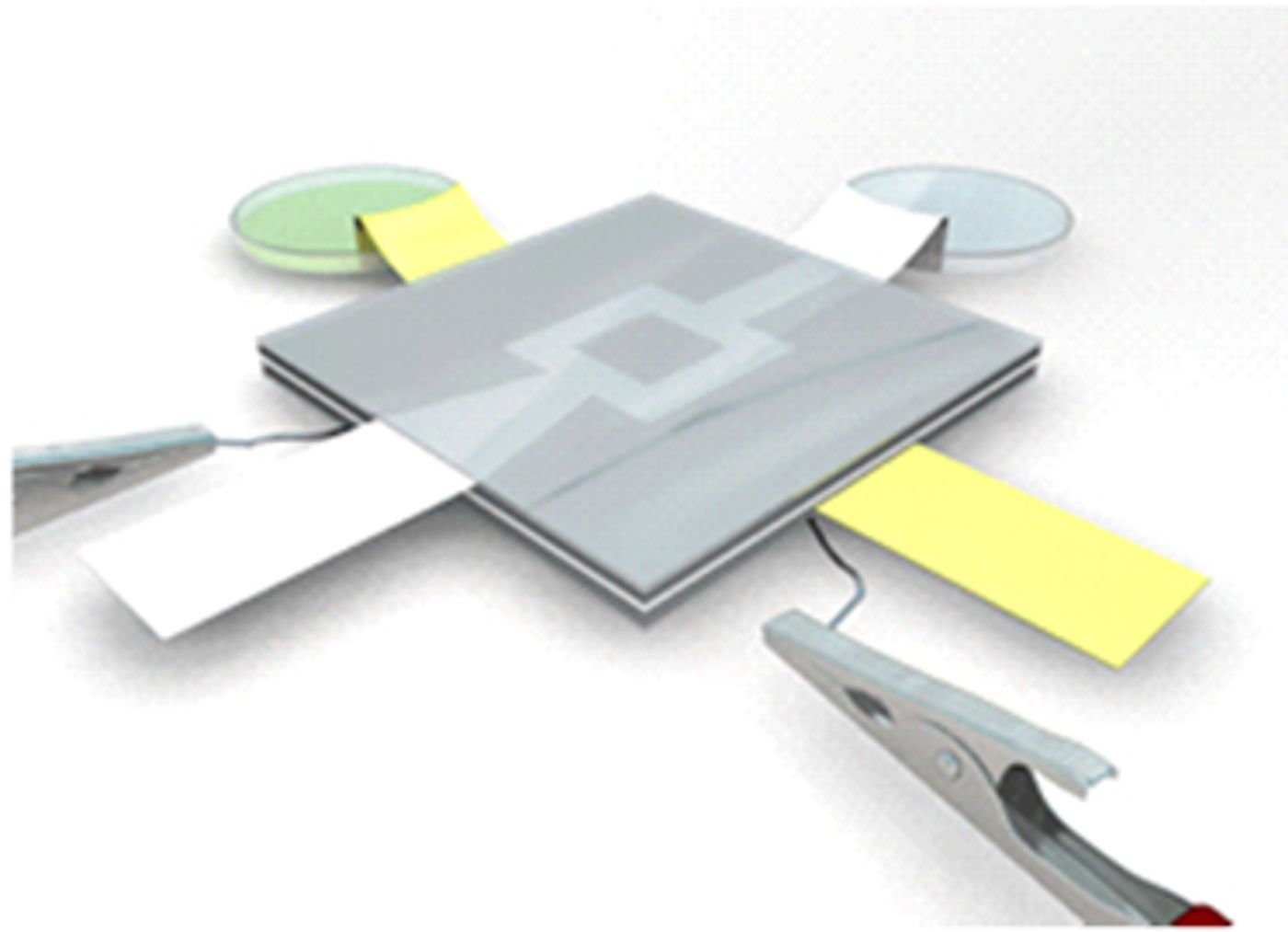Microbial fuel cells (MFC) present an intriguing opportunity for technology because they operate in an environmentally friendly way. They are limited, however, because they don’t operate for long and they may be tough to scale down. A team of scientists at Iowa State University has announced their development of a three-dimensional paper-based MFC that can utilize the power of capillary action to funnel liquids throughout the MFC apparatus, eliminating a need for external power.

The device allows flow of the streams of Shewanella Oneidensis MR-1 (yellow) and the Potassium Ferricyanide (white) into the chambers. Proton exchange membrane is placed between the two chambers to separate the two liquids as well as allow the positively charged ions released in the biocatalytic breakdown of the anolyte to flow from the anode to the cathode. Credit: TECHNOLOGY
in the journal Technology, they demonstrate that their paper-based MFC can run for five days, producing of current as a result of the formation of biofilm on anode. The system can produce 1.3 μW of power and 52.25 μA of current, yielding a power density of about 25 W/m3 for this experiment. Basically, the results show that the MFC creates power in an environmentally friendly way without the use of any outside power. "All power created in this device is useable because no electricity is needed to run the fluids through the device. This is crucial in the advancement of these devices and the expansion of their applications." explains Nastaran Hashemi, PhD, Assistant Professor of Mechanical Engineering and senior author of the paper.
Biofilm formed on carbon cloth during the test, providing additional evidence that the current measured resulted from the biochemical reaction that was occurring. This is important because the biofilm plays a crucial role in the ability of an MFC to produce current. As biofilm size and thickness increases, current production increases. Bacterial cells metabolize electron-rich substances in a complex process that involves numerous reactions, catalyzed by enzymes. The electrons may then travel freely to the anode through one of many modes of electron transport. Biofilm also helps with the adsorption of the redox molecules to the electrode, which makes it important to have in high power density microbial fuel cells.
Few studies have been performed on power production from paper-based microbial fuel cells that run for few days. Without allowing enough time for biofilm to form, any current and power data that was measured would primarily be associated with extracellular electron transfer, which does not fully represent the electrical power producing capabilities of microbial fuel cells. For the first time, this device demonstrates a longer ability to operate individually and length of use. As such, this is a development that could help expand the number of ways in which microbial fuel cells could be applied.
The Iowa State University research team is currently investigating methods to improve the control of voltage output, as well as creating a constant current. Using controlled tests in a stable environment will aid in the regulation of any output of the system and yield more consistent results. To optimize usability and keep costs down, the scientists would also like to try a device that would not have to use Nafion and Potassium Ferricyanide in any application.
For more information on how the MFC technology works, check out this fun video.
Sources:
World Scientific via
Science Daily









